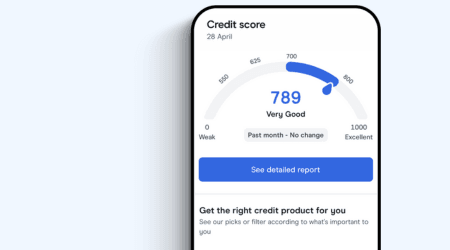The cost of living pressure experienced by Australian households sits in the extreme range at 79%
What you need to know
-
The Finder Cost of Living Pressure Gauge has been updated with new data covering the month of December 2023.
-
The resulting December 2023 measurement for the cost of living pressure is 79% - an increase of 1%.
-
For more detailed information on how we constructed this see the methodology section below.
The Cost of Living Pressure Gauge, devised by Finder, measures the financial burden on Australian households. It integrates findings from Finder's Consumer Sentiment Tracker with official government data, providing a clear depiction of the economic challenges faced by consumers. Updated monthly, the model combines monthly and quarterly data on various aspects such as housing stress, salary projections, household debt, financial strain, savings, holiday intentions, credit card expenditure, the RBA cash rate target, property values and inflation. Presently, the Cost of Living Pressure Gauge stands in the extreme range, at 79%.
So what exactly does this look like in raw terms?
At an extreme pressure level of 79% at the end of December:- Australians report $3,000 lower savings balances compared to the previous month.
- 78% of Australians feel extremely or somewhat stressed about their finances.
- 56% of homeowners and 63% of renters report housing costs are causing financial stress.
- The RBA's cash rate target of 4.35% is its highest since 2011.
- Australian credit card spending reached a record high at $34.6 billion.
Comparatively, at a moderate pressure level of 45% in December 2020:- 68% of Australians said they were stressed about their current financial situation.
- Only 18% of homeowners and 32% of renters were struggling to pay.
- The cash rate target was significantly lower at 0.10%.
- Annual inflation was recorded at 0.9% in November 2020.
- 42% of mortgage holders faced mortgage stress.
The December pressure reading shows a continued decline from April 2023's peak of 83%. This reduction is largely due to a decrease in financial stress reported by consumers via our Consumer Sentiment Tracker. Nevertheless, the pressure remains significantly higher than the levels observed throughout most of 2020 and 2021. More information on the methodology behind these figures is provided below.
Methodology
Finder's Cost of Living Pressure Gauge merges data from its Consumer Sentiment Tracker (CST) and the Reserve Bank of Australia (RBA). Updated monthly, it combines CST data with RBA figures, which are updated either monthly or quarterly. When specific monthly RBA data is unavailable, the preceding quarter's figures are used.
Percentage data in the gauge has a set maximum, or "ceiling", defined as 100% pressure. For example, if a survey question like "How stressed are you about your financial situation?" has an 80% ceiling, then 80% of negative responses (extremely or somewhat stressed) equates to 100% pressure. Responses exceeding this ceiling are capped at 100%. This weighting is applied proportionally. Non-CST data is converted to a percentage using the highest and lowest values in the available range. After calculating all data, a global weighting is assigned to each figure, as outlined in the table below. Historical pressure figures may be revised with new data availability.
Data categories explained
- Mortgage/rent stress: The proportion of consumers identifying their mortgage or rent as a primary financial stressor.
- Mortgage/rent struggle: The percentage of consumers who find it difficult to make their rent or mortgage payments.
- Salary sentiment: The percentage of Australians expecting a pay rise within the next year.
- Spend sentiment: The number of Australians who are unhappy with the amount they need to spend monthly to maintain their standard of living.
- Household debt: The number of Australians who have negative feelings about the level of debt in their household.
- Financial stress: The percentage of Australians who report being extremely or somewhat stressed about their financial circumstances.
- Credit card dependency: The percentage of respondents relying on credit cards to manage their financial affairs.
- Amount saved monthly/total savings: Reported monthly savings and total savings figures, as provided by respondents.
- Holiday plans: The percentage of Australians intending to go on a holiday in the upcoming year.
Additional data from the RBA:
- Cash rate target/saving rate: The current cash rate target and average online savings account rate, as reported by the RBA.
- Credit card spending/unpaid balances: The current national spending on credit cards and the amount of balances that are accruing interest, according to the RBA.
- Inflation/housing inflation: The annual changes in general inflation and housing costs, as reported by the RBA.




